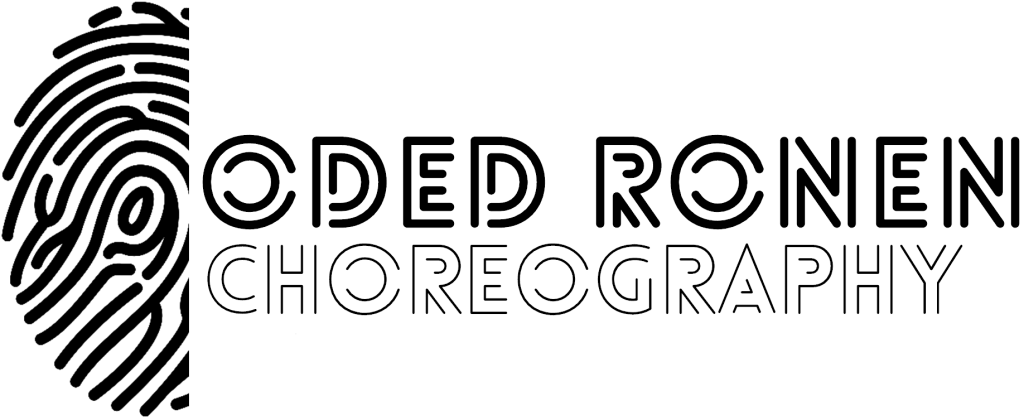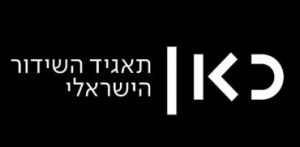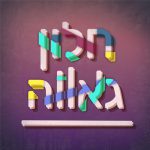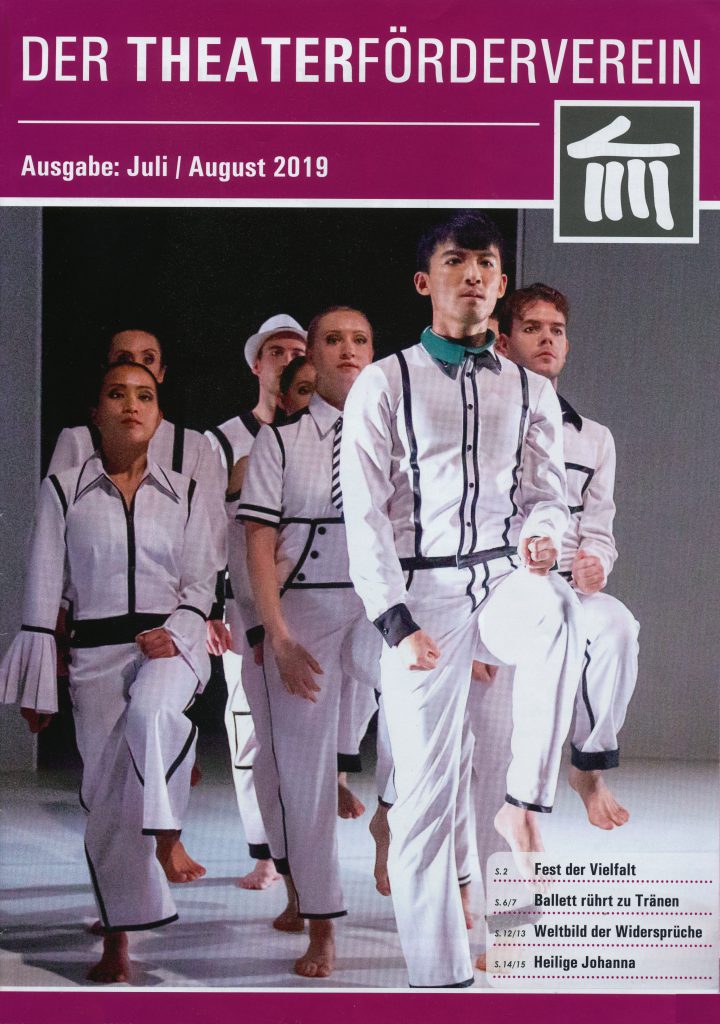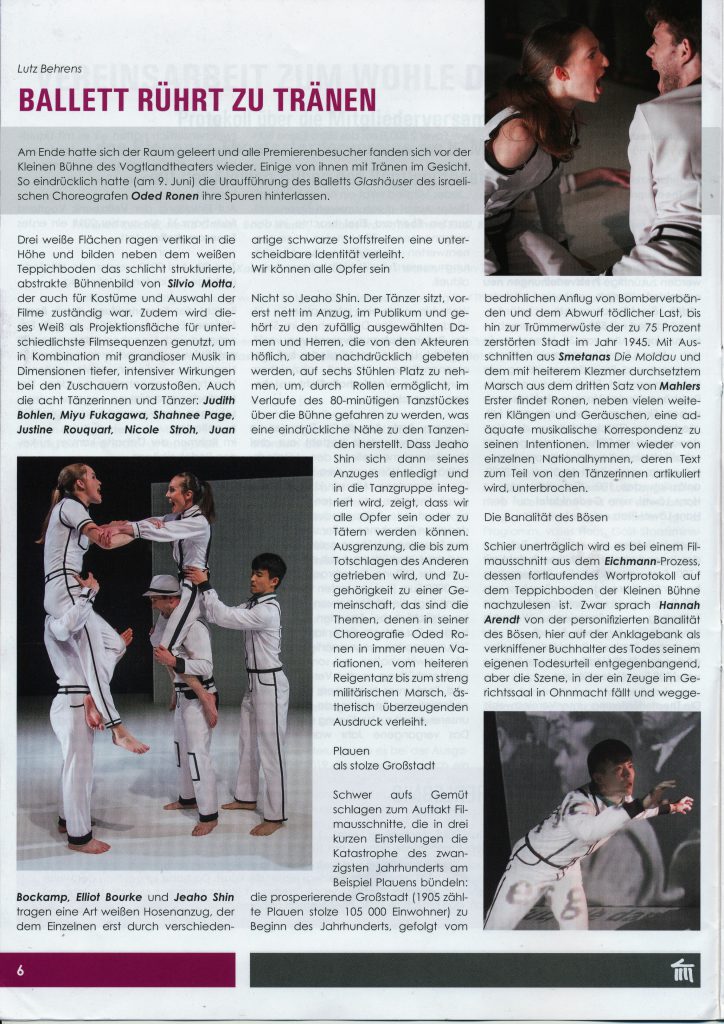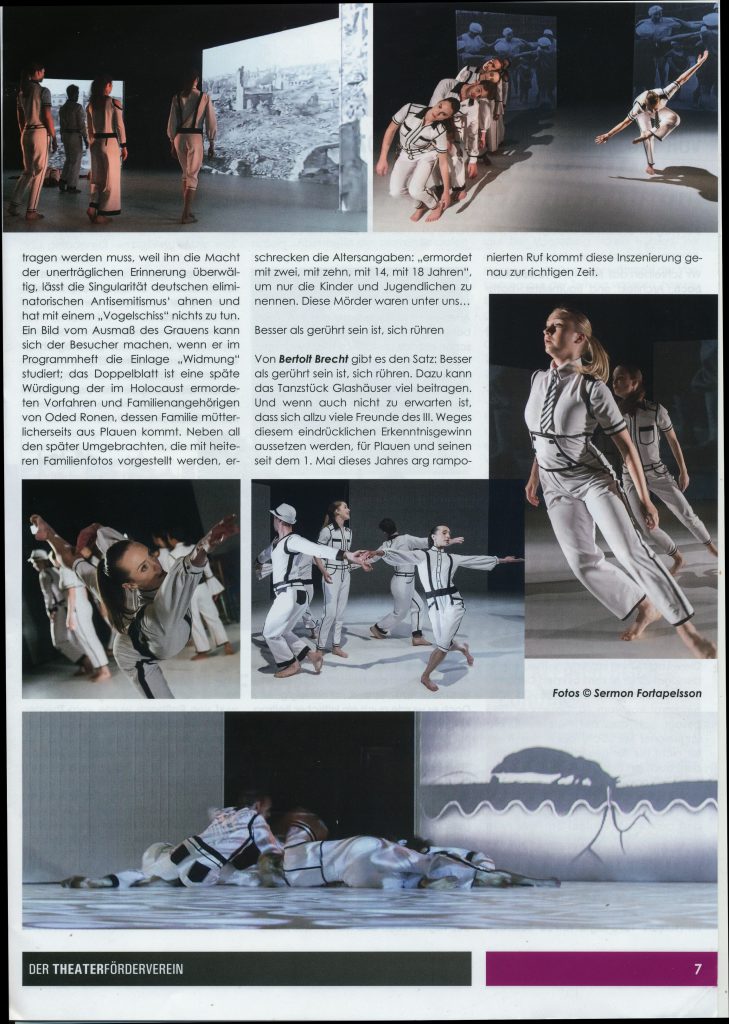… touching and discomforting.
…evoking strong and deep emotions for the viewer.
…shows that we all have the potential to be victims, or the opposite – criminals.
Dr. Lutz Behrens, Vogtland Anzeiger

The show ends with each member of the audience led out of the theater and into the street by one of the dancers. After a work which is difficult to watch, it is a very fragile and humane moment, where all boundaries are deleted – between the dancer and the spectator, and between stage and life.
Walla! Pride

I asked the dancers to read a book that deals with collective ego and shows how mass madness develops. Over time we entered an increasingly dark realm, without self-judgment… I also gave them missions to be an aggressor and a victim, that at times got out of hand. I filmed everything on video
Zohar Elia Turiel , Xnet

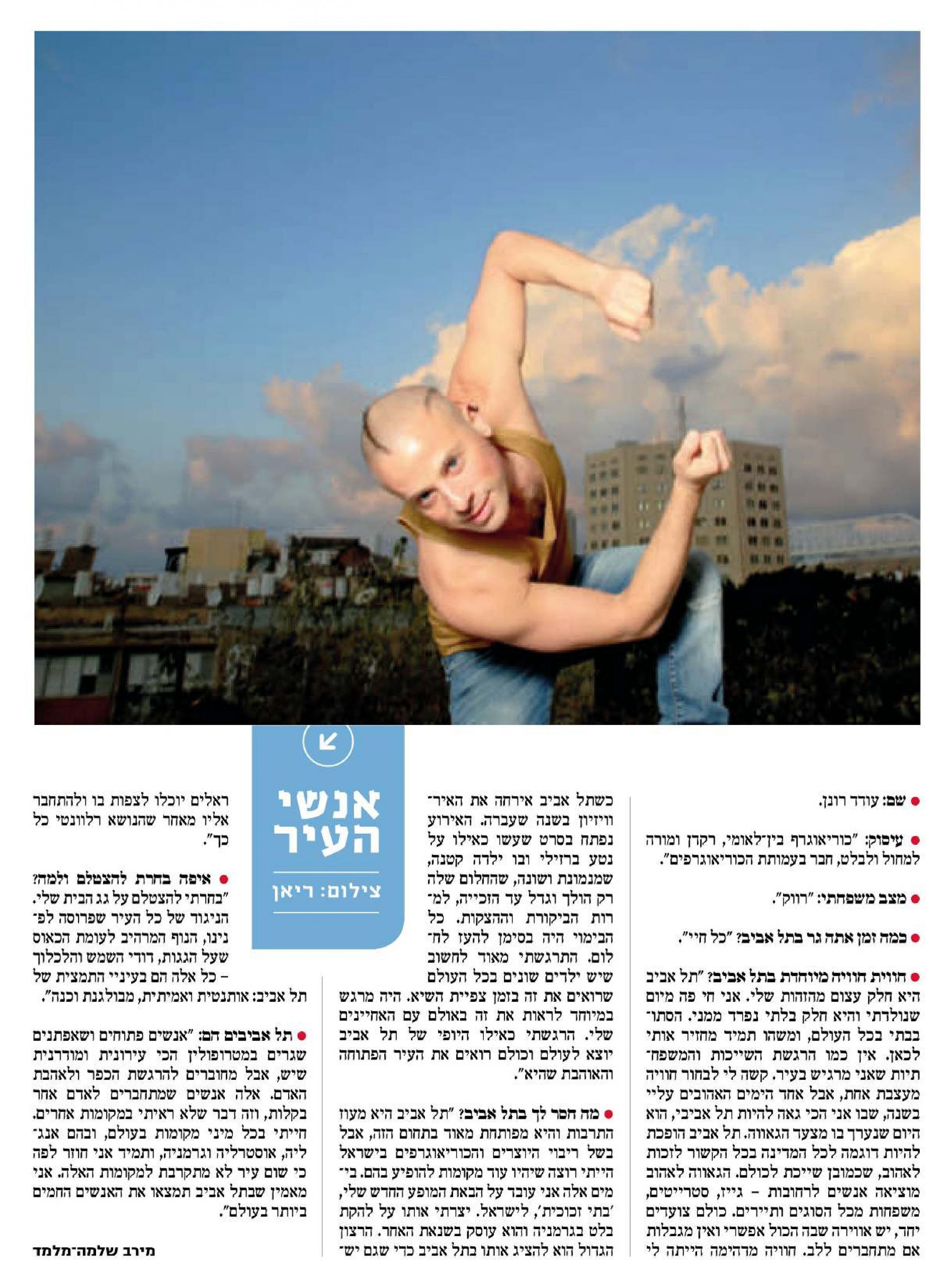

An intimate work, moving and profound, with outstanding performances by Oded Ronen and Ligal Melamed
Reaching beyond the individual, it has an almost mythological feel.
…a performance space that dares you to bare your soul in front of an attentive audience.
Oded Ronen’s work investigates the most abstract concepts – identity, self, self & other, relationships, community, beliefs – in the most visceral, physical way. Taking apart and constructing, destroying and building, exploring the mythology of relationships, Capsule is a riveting emotional experience, marked by beauty and mystery.
Ayelet Dekel, Midnight East

Capsule is an intimate work with an outstanding performance which combines the most abstract concepts of identity, self, relationships, community and beliefs.
It throws light on the essence of peace and how nonviolent co-existence ensures the survival of humanity.
Even though it was a dance production, it painted a telling picture of the process of peace building.
Business Ghana

The piece is philosophical… it encompasses diverse notions including identity, relationships, community and beliefs among others.
Employing classical virtuosity, they effectively combined contemporary sensibilities while unfolding a fascinating experience characterized by majesty and mystery.
…equally about mutual discovery, tenderness and ecstasy that are beautifully articulated through the choreography.
Undeniably, a great deal of energy emanated from the stage as the dancers moved with amazing ease.
John Owoo, Arts Ghana
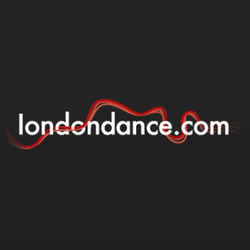
…the piece is intense and carries passages of beautiful slow and sustained movement as well as more chaotic moments.
[Bringing] synergy with a thought provoking and elegiac choreography carried out with unflagging energy and power of performers.
…by far the standout performance of the night.
Rachel Nouchi, London Dance

While the movement is often graceful and athletic, the sense of flaw, of something not quite right, pervades this excellent piece.
…as if to show the mending has been in vain. A sombre and moving close to a marvellous piece of contemporary dance.
Each dancer has a moment to break away from the group into an energetic solo; like a body packed with energy it is struggling, desperately, to control…
The central piece, and the standout piece of the night, is Oded Ronen’s “Kintsugi”.
Martin Thomasson, British Theatre Guide

…developed to highlight the purpose for building bridges to bring Ghana and Israel together. The piece also highlighted individual struggles and passion, and the collective power of working together.
…the performance sought to promote community existence and international cohesion.
The Israeli Embassy in Ghana
The collective power of working together to build a bridge between two the cultures and …a language of movement that will connect between Israel and Ghana.
